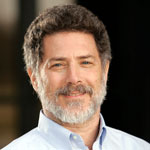My dad retired at age 55 in 1975. He sold his business with a 17 year payout. He told me his plans saying, “I’ll have money until your mother and I are 72. Who lives past 72?” I remember the conversation clearly. I didn’t argue. Just thirty two years ago my father and I both accepted the idea that age 72 was a reasonably long life.
My father is still alive at 88. Dad is healthy. That doesn’t mean he is the same as he was when he was 60 or even 75. He moves more slowly, has less stamina, and many health conditions for which he sees doctors and takes lots of pills. His story and his condition are very common.
Our population has changed significantly. Increased longevity, a benefit of medical science, means people with conditions that were not manageable before are alive and enjoying life. This is COPD, Parkinsons, MS, diabetes, heart disease, spinal cord injuries and a host of other chronic and degenerative conditions. One side effect of increased longevity is that our homes are no longer a good fit for our population.
Some people say we have “Peter Pan” houses. You know Peter Pan, the guy who never grows old. We are not Peter Pan. Our aging population means there is more diversity. Some people roll, some people hobble, some people shuffle, some cannot see or hear well. All these variations mean that our houses should be different from houses designed for Peter Pan.
Home modifications are an antidote for this side effect. One way to talk about home modifications is to say they fill the gap between the houses we have and the houses we need.
The home I grew up in would be inappropriate for dad today. It was typical with steps at every entry, narrow doorways, all bedrooms and full baths on the second floor. Built for Peter Pan. My dad is not the problem. Dad is a miracle. He is the essence of our success as a culture and society. The homes are a problem. Home modifications fill the gap between the population we were and the population we are.
It is hard to carry out the process of home modifications following an injury or illness. The mindset and timing do not allow patient decision making and scheduling. It is almost imperative that Home Modifications be done before there is a need.
It is very important to state clearly that modified homes are beautiful. Those of us working in the field are not creating mini-nursing homes on every block. The principles of Universal Design used by competent designers result in homes that are attractive, gracious and inviting. Some books with photos of beautiful Universal design are High-Access Home, Beautiful Universal Design, and Gracious Spaces. The AARP website has lots of information.
What is the incentive to include Universal Design in our homes? Universal Design is the best insurance value you can buy. Most insurance requires an unpleasant loss to receive any benefits. Universal Design provides wonderful value as soon as you make the purchase. You continue to use that benefit even if you never claim the loss. The comfort and ease inherent in Universal Design naturally provide beauty and grace that warms our spirit. How about that for incentive?
Modified homes provide value in many ways:
- The real estate is attractive to a larger (remember diversity) population. Your home is prepared for the largest, fasting growing population.
- Homes modified using the principles of Universal Design are prepared for unknown futures before there are real needs.
- The elements of Universal Design reduce the risk of falls and injuries to users and occupants.
- Universal Design creates more ergonomic caregiver spaces.
- Earlier return home from injuries and illness to finish rehabilitation.
- The opportunity to live with changed capacities. What everyone wants.
We are not going to grab the phone and start the process of modifying our homes just because it is a great idea. We can pledge to include Universal Design in every improvement and project we do in our homes. EveryOne. EveryThing.
 Louis Tenenbaum, one of the nation's leading authorities on aging in place, is the founder of HomesRenewed, a coalition of business, consumers and nonprofits, driving policy and investment to increase the number of age-friendly homes.
Louis Tenenbaum, one of the nation's leading authorities on aging in place, is the founder of HomesRenewed, a coalition of business, consumers and nonprofits, driving policy and investment to increase the number of age-friendly homes.